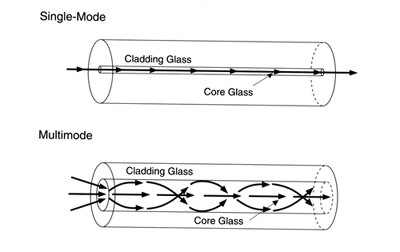Imagine a highway so efficient that only one type of vehicle could drive on it — one that’s incredibly fast and never gets caught in traffic. Now, replace that vehicle with a beam of light, and you have the essence of single-mode fiber-optic cabling. In this article, we’re going to explore the fascinating world of single-mode fiber-optic cables, the unsung heroes of the digital age that carry vast amounts of data across the world at nearly the speed of light. This guide will shine a light (pun intended) on how these slender strands of glass and their ability to transmit information revolutionize our connectivity and communication systems.
Table of Contents:
- What is Single-Mode Fiber-Optic Cabling?
- 1.1. The Basics of Fiber-Optic Technology
- 1.2. Single-Mode vs. Multi-Mode Fiber
- The Science Behind the Light
- 2.1. Understanding Core and Cladding
- 2.2. How Light Travels in Fiber
- Benefits of Single-Mode Fiber
- 3.1. Long-Distance Transmission
- 3.2. High Bandwidth Capabilities
- Applications of Single-Mode Fiber
- 4.1. Internet Backbones
- 4.2. Telecommunications
- 4.3. Network Systems in Large Organizations
- Installing Single-Mode Fiber
- 5.1. Best Practices
- 5.2. Challenges and Solutions
- The Future of Fiber Optics
- 6.1. Innovations on the Horizon
- 6.2. The Role of Fiber in Next-Generation Networks
- References
- 7.1. Books
- 7.2. Scholarly Articles
- 7.3. Online Resources
1. What is Single-Mode Fiber-Optic Cabling?
Single-Mode is a type of fiber-optic cabling that can carry only one signal at a time. Single-mode fiber-optic cabling uses light generated by a laser-emitting diode to carry signals.

1.1. The Basics of Fiber-Optic Technology
At its core, fiber-optic technology is about using light to carry information. But it’s not just any light; it’s a highly controlled and directed beam that zips through cables thinner than a human hair. These cables, made mostly of glass or plastic, act like a futuristic train system for photons (the particles that make up light). The photons enter at one end and are guided down the cable by a principle called total internal reflection, which is a fancy way of saying the light bounces back and forth down the fiber without escaping. It’s somewhat akin to a bobsled gliding down a frosty track at breakneck speeds, tightly contained within its boundaries.
1.2. Single-Mode vs. Multi-Mode Fiber
The single-mode fiber-optic cable is the Olympic sprinter of the fiber world — designed for long distances and high performance. It uses a very thin core, about 8 to 10 microns in diameter (a human hair is about 75 microns across). This tiny core size allows it to carry laser light straight down the center without much reflection, making it ideal for transmitting over long distances without losing signal strength.
In contrast, multi-mode fiber, with its larger core size of about 50 to 62.5 microns, allows light beams to travel in multiple paths or modes, hence its name. This makes it suitable for shorter distances but with more data dispersion over long hauls. It’s like having a local versus an express train — the multi-mode is great if you’re stopping often, but for long, straight routes, you want the single-mode.
In the next chapter, we’ll delve into the optical gymnastics of how light travels through these fibers and why single-mode fiber allows for much longer transmission distances and higher bandwidths compared to its multi-mode sibling.